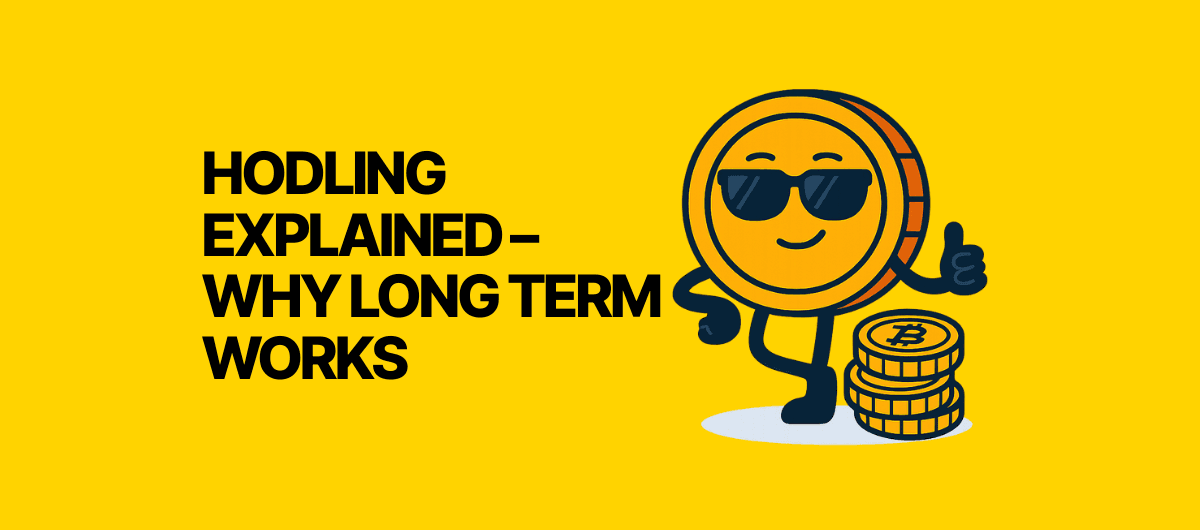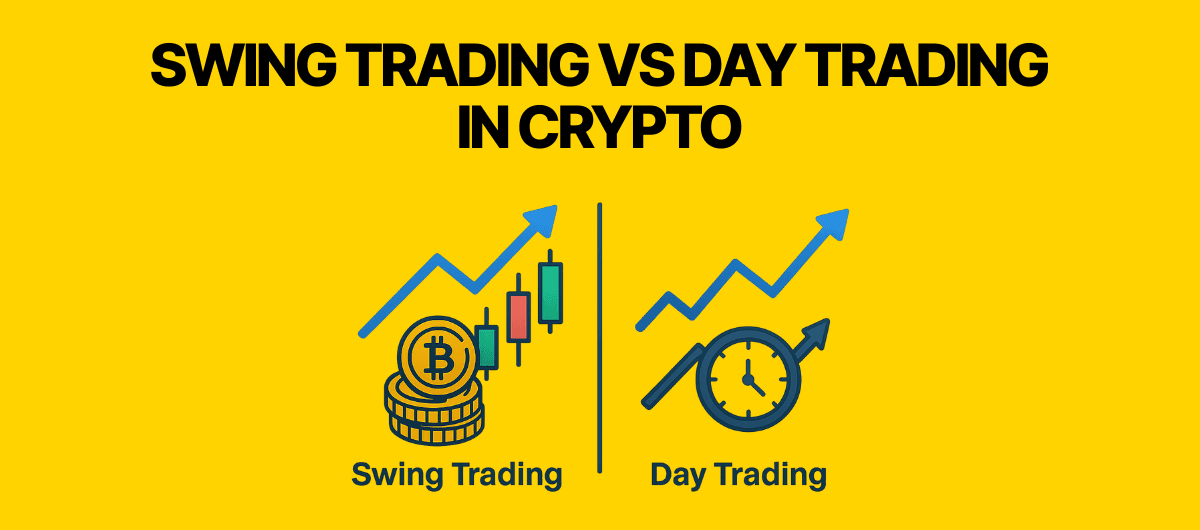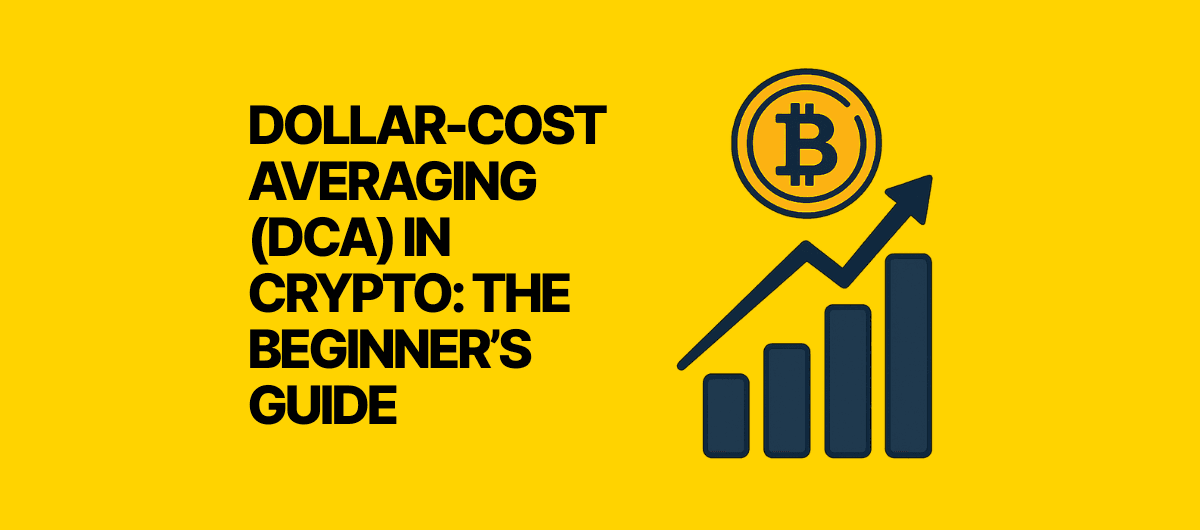HODLing Explained – Why Long Term Works (2025 Guide)
Discover what HODL means in crypto, why long-term investing works, and how to manage emotions, risk, and time horizons like a pro in 2025.

Hey, it’s Lanzo 👋
Ever wondered why some people just hold crypto through every market cycle — and still come out ahead?
That’s the power of HODL — a meme that became one of crypto’s strongest investment philosophies.
In this guide, you’ll learn:
- What HODL really means (and where it came from)
- Why long-term investing often beats trading
- How to handle market volatility and avoid emotional selling
- The role of Bitcoin, Ethereum, and stablecoins in long-term portfolios
- Smart strategies like DCA (Dollar-Cost Averaging)
- Tools and wallets to help you HODL safely
Let’s talk about how time — not timing — can make you a winner 👇
What Does “HODL” Mean? 🧠
The term HODL originated from a drunken typo in a 2013 Bitcoin forum post titled “I AM HODLING.”
The user meant to write holding — but the internet turned it into a battle cry for long-term conviction.
Today, “HODL” means:
Holding your crypto long-term despite volatility — because you believe in the technology and its future value.
In short, it’s the opposite of panic selling.
It’s what separates early believers from the easily shaken.
Why Long-Term Investing Works 🕰️
Let’s be honest — nobody can perfectly time the market.
Not even professional traders get it right every time.
But time in the market often beats timing the market.
Here’s why:
- Volatility smooths out over time — daily swings matter less on multi-year charts.
- Halvings, adoption cycles, and tech growth reward patience.
- Compounding returns (staking, yield, reallocation) work best when uninterrupted.
- Taxes and fees are lower with fewer trades.
- Emotions cool down — no FOMO or panic trades.
If you zoom out on Bitcoin’s chart, it’s easy to see:
every major dip was just a stepping stone for the next rise.
Related: How to Build a Safe Crypto Portfolio
The Psychology of HODL 🧘♂️
HODLing isn’t just financial — it’s psychological discipline.
Crypto markets test your emotions more than your math skills.
The average investor fails not because of bad coins, but because of bad timing — selling low and buying high.
To stay grounded, remember:
- Volatility ≠ risk (unless you sell).
- Every crash feels like “the end.” It never is.
- Zoom out: Bitcoin once fell 80%, multiple times — and still made new highs.
Lanzo Tip: The best traders act like investors, and the best investors think like monks — patient, calm, unshaken.
How to HODL Strategically 📊
“HODL” doesn’t mean “never touch your portfolio.”
It means make decisions based on time horizons, not emotions.
1️⃣ Define Your HODL Assets
These are coins you truly believe will be around in 5–10 years.
Typical examples:
- Bitcoin (BTC) — digital gold, store of value
- Ethereum (ETH) — smart contract backbone
- Layer-1s like XRP or Cardano
- Stablecoins for yield and risk management
2️⃣ Use Dollar-Cost Averaging (DCA)
Buy a fixed amount at regular intervals — weekly or monthly.
This smooths out volatility and builds your position steadily.
3️⃣ Stake or Earn Yield
Make your HODL work for you with staking or Earn programs — but always through trusted platforms like Bybit Earn or directly on-chain with hardware wallets.
The Power of Time Horizons 🪙
Crypto moves in cycles, not straight lines.
Each cycle includes:
- Accumulation phase (smart money buys)
- Bull run (public hype)
- Correction (profit-taking, disbelief)
- Re-accumulation (strong hands stay, weak hands fade)
If you hold through at least one full cycle (≈4 years), history shows it’s hard to lose — assuming you picked quality assets and stored them safely.
Example:
2017 BTC peak = $20,000
2021 BTC peak = $69,000
That’s over 3x — just by waiting.
Common HODL Mistakes ❌
Even good investors make mistakes when emotions take over.
Here’s what to avoid:
- Overtrading your HODL bag — defeats the purpose.
- Ignoring security — losing coins isn’t “holding.”
- No exit strategy — when do you take profit?
- Holding everything forever — some coins die.
- Trusting exchanges too long — not your keys, not your coins.
Lanzo says: “HODL smart — not blind.”
The Math of Patience 📈
Here’s what HODLers understand that traders forget:
Missing just a few “best days” in crypto can destroy long-term returns.
Example (Bitcoin historical data):
- Investor A stays invested all year → +120%
- Investor B misses the 10 best days → +35%
- Investor C trades emotionally → -20%
Most gains happen during unexpected short bursts — and HODLers are the only ones still in the market when that happens.
That’s why patience is an alpha strategy.
When (and How) to Take Profits 💰
HODL doesn’t mean “never sell.”
It means sell on your terms, not the market’s.
Smart profit-taking:
- Use price targets or percentage goals (e.g., +200%, sell 20%)
- Rebalance into stablecoins or BTC during hype phases
- Keep some dry powder for dips
Holding forever without strategy is stubbornness — but holding with conviction is discipline.
Tools to Help You HODL 🧰
| Purpose | Tool | Description |
|---|---|---|
| Tracking | CoinLedger | Portfolio + tax automation (10% off with CRYPTOTAX10) |
| Cold storage | Ledger Nano X / NGRAVE ZERO | Hardware protection for long-term safety |
| On-ramp | Bybit | Easy way to buy & stake crypto safely |
| Research | CoinGecko / Messari | Track fundamentals & token performance |
Use code CRYPTOTAX10 at checkout.
Security: The Real Key to HODLing 🔒
The longer you plan to hold, the more security matters.
Golden rules for long-term holders:
- Always use hardware wallets (Ledger, NGRAVE).
- Back up your seed phrase on metal, not paper.
- Avoid keeping large funds on exchanges.
- Don’t connect your cold wallets to DeFi apps casually.
- Run a recovery test once a year.
Related: EAL5+, EAL6+, EAL7 Explained — What These Security Levels Mean for Your Crypto Wallet
HODL Mindset: Think Like a Builder 🧱
Every great investor in crypto eventually realizes this:
You don’t get rewarded for trading more — you get rewarded for lasting longer.
When others panic, you’re calm.
When others overleverage, you stay patient.
That’s HODL.
This mindset isn’t lazy — it’s strategic.
Because crypto is still early. The next wave of adoption will reward those who stayed the course, not those who jumped ship.
TL;DR 📌
- HODL = Hold On for Dear Life — long-term conviction.
- Volatility is temporary; conviction compounds.
- Use DCA to build positions over time.
- Always use secure wallets (Ledger, NGRAVE).
- Take profits strategically, not emotionally.
- HODL isn’t about never selling — it’s about never panicking.
- The key to crypto wealth: time + patience + security.
FAQ
Yes — long-term holding of quality assets like BTC and ETH remains one of the most successful strategies across all market cycles.
Start Your Long-Term Journey 🚀
Bybit — Buy & Earn Long-Term
Buy Bitcoin and Ethereum safely, stake stablecoins, and start your long-term journey with Bybit’s secure platform.
This is an affiliate link. If you buy, Lanzo may earn a commission at no extra cost to you.
Ledger Nano X — Secure Your HODL
Industry-standard hardware wallet (EAL5+) that keeps your long-term crypto safe offline.
This is an affiliate link. If you buy, Lanzo may earn a commission at no extra cost to you.
NGRAVE ZERO — Elite Cold Storage
EAL7 (CL7) certified, airgapped hardware wallet designed for serious long-term holders.
This is an affiliate link. If you buy, Lanzo may earn a commission at no extra cost to you.
CoinLedger — Track & File Your HODL Gains
Sync your wallets, calculate profits, and automate tax reporting. Use code **CRYPTOTAX10** for 10% off.
This is an affiliate link. If you buy, Lanzo may earn a commission at no extra cost to you.
⚡ Lanzo Tip: Markets reward patience, not panic. Hold smart, stay secure, and let time do the heavy lifting.
⚠️ This post is for educational purposes only and does not constitute financial advice.
(This post contains affiliate links — supporting Lanzo at no extra cost to you.)
You might also like
Not financial advice. Based on public sources. As of today.


